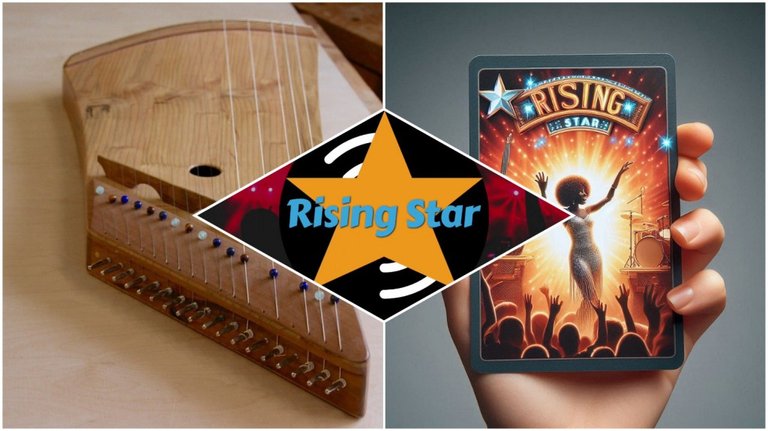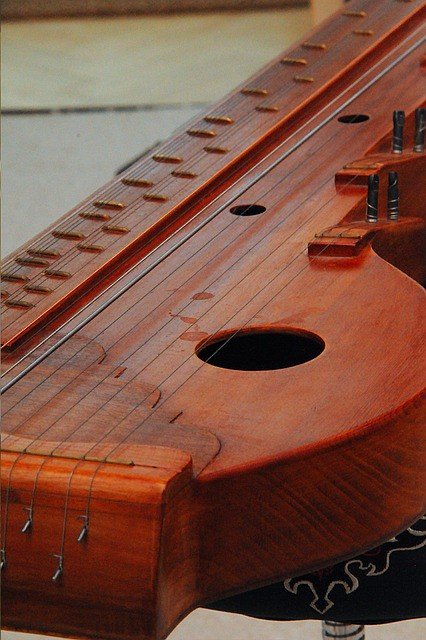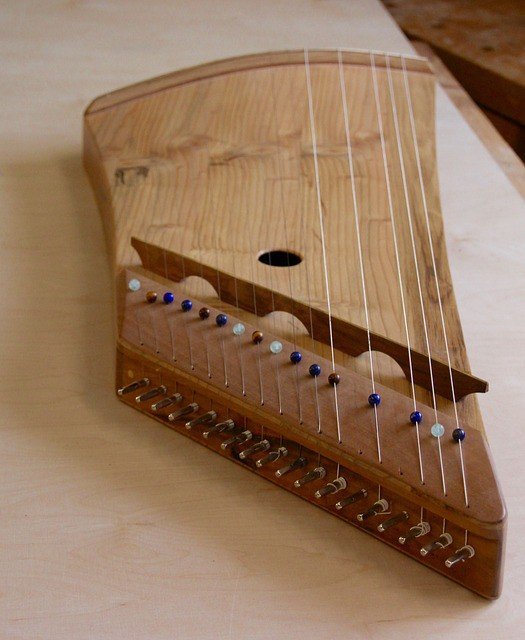Greetings and good morning my friends from Rising Star. How are you? I'm doing well so far 😅. Today I'm very happy to share with you a new article on my blog. I want to tell you some interesting facts about a very interesting instrument, I'm referring to the Zither. And, as usual, at the end of the post I'll present some fan art I've created, inspired by our beloved game, Rising Star. Without further ado, let's begin.

Source: Canva
We start with the basics and answer an important question: What is a zither? Well, I'll tell you that the zither is a string instrument, but don't be confused, it's not a guitar, it's more like a harp. It's played by plucking the strings with your fingers or with a kind of little pick. This instrument has gone through a lot of changes throughout history, and today we're going to give it a little rundown 😅.
It is known that the zither was born in ancient Greece, where it was called "kithara." The Greeks used it for everything from festivals to religious ceremonies, and it was the favorite toy of poets and musicians. Over time, it was adapted to other cultures, such as the Roman and Egyptian, each adding their own style.
On the other hand, in the Middle Ages, the zither was transformed into various string instruments, such as the psaltery and the dulcimer. By the Renaissance, the zither became more pro, with more strings and a better sound. In the Baroque, it became the center of courtly parties and chamber music.
- The zither works by the vibration of its strings, which are stretched over what is called a resonant body. That is, to echo its sound. You can pluck them with your fingers or with a plectrum (the little pick I told you about at the beginning). It can have several strings, and some modern zithers have up to 40 strings. That is why it is more similar to a harp than a guitar.
As for the types of zithers, I can tell you that there are many, but I am going to tell you about the most important ones, Concert zither, this is the most pro, with a lot of strings and a great sound. It is more ideal for classical and folk music. There is also the Salon Zither, which is smaller, and the Electronic Zither, which is the modern version, with amplification and cool effects.
Fun facts you should know.
The zither is one of the oldest known instruments. Drawings of zithers have been found on Greek frescoes and ceramics dating back more than 2,500 years. This is already a good indication of how old it is.
In the Middle Ages, only royalty and nobility could afford to own a zither, as they were very expensive and a status symbol.
The zither has different names around the world. In Hungary it is called "citera", in Germany "Zither", and in the English-speaking world the modern version is the "autoharp".
Friends, these were the curious facts that I wanted to tell you today. The truth is that the zither is an instrument with a cool history and many interesting facets. And very important before finishing, if you have a zither lying around, feel free to tell me in the comments your experiences with it.
Rising Star Fan Art
Now, changing the subject, I present my post #76 about some of the fan art I've made with the help of DALL-E, inspired by our beloved game, Rising Star. In this post, I've used the card theme again along with several elements of the game. For example, I've added the star, some instruments and singers to give more personality to the images. Some of the images also have futuristic and retro touches, and I've added stages and concerts to give it a special touch.
The images are free to use, so you can use them from this post without any problem. I reiterate that they have been made by me with the help of DALL-E.
I hope you enjoyed this journey through the history and curiosities of the Zither. And that you liked the fan art. See you in a new post. Until next time friends, greetings to all.









